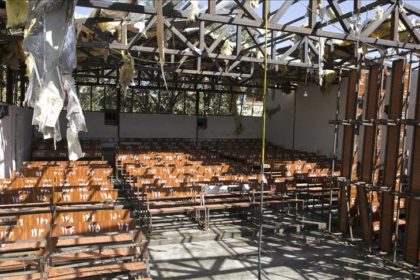RASC News Agency: Sources close to the inner circle of the Taliban in Kandahar report that, under the direct instruction of the group’s supreme leader, Mullah Hibatullah Akhundzada, a high-level meeting of provincial governors was convened in Kandahar city. The meeting included representatives from seven strategically important provinces, including Balkh, Nangarhar, Kabul, Kunduz, Herat, and Paktia. According to local sources, the gathering was hosted at the office of Mullah Shirin Asan, a senior Taliban official, who presided over the discussions. While a broad set of administrative issues was addressed, the central focus of the meeting was the increasing activity of armed opposition groups and the Taliban’s faltering capacity to respond effectively.
Reports indicate that governors discussed measures described by the Taliban as “streamlining” their ranks a euphemism for reducing “unnecessary” personnel internal purges, repatriation of Taliban-affiliated families living abroad, and strict restrictions to prevent disclosure of sensitive security events. Strengthening border security and reinforcing frontier forces were also prioritized, reflecting the Taliban’s growing concern over external support for resistance movements and insurgent activity across Afghanistan’s borders. Provincial officials presented alarming updates from the ground. Mohammad Yousuf Wafa, governor of Balkh, confirmed a notable uptick in armed opposition in northern Afghanistan, claiming that measures were being taken to suppress these forces. The governor of Herat raised concerns about potential Iranian influence through Afghanistani migrants, emphasizing that the increase in the Afghanistani diaspora could have long-term geopolitical implications. Other governors corroborated that armed activity had increased significantly compared to the previous year, stressing the need for more aggressive countermeasures.
Analysts note that, for years, the Taliban have systematically denied the existence of armed opposition, framing resistance as limited to social media or small, inconsequential networks. Yet the reality on the ground is starkly different: even minor opposition groups are asserting a more visible presence, conducting coordinated operations, and gradually challenging Taliban authority. This emerging threat highlights the growing disconnect between Taliban propaganda and their actual capacity to maintain control. The fact that Mullah Shirin presided over the meeting rather than Mullah Hibatullah himself, as has been the practice in past high-level gatherings signals the increasing reliance on trusted lieutenants within the Taliban hierarchy. However, it also underscores the group’s vulnerabilities and internal insecurities: a leadership struggling to assert authority over both its ranks and a rising insurgency.
Observers further emphasize that Taliban support for transnational terrorist networks on Afghanistan’s soil has severely eroded their credibility, even with traditional regional partners. The group faces a convergence of challenges: the resurgence of armed opposition, deepening economic and financial crises, and the absence of both domestic legitimacy and international recognition. Collectively, these pressures not only threaten the Taliban’s grip on power but may also foreshadow further instability, fragmentation, and declining control over Afghanistan’s territory. The Kandahar meeting, therefore, while projecting an image of control, exposes the Taliban’s growing desperation, their inability to address the real security threats, and the widening gap between rhetoric and reality. Analysts warn that unless meaningful reforms and genuine countermeasures are implemented a scenario that appears unlikely the Taliban’s rule will continue to be increasingly fragile and contested.






